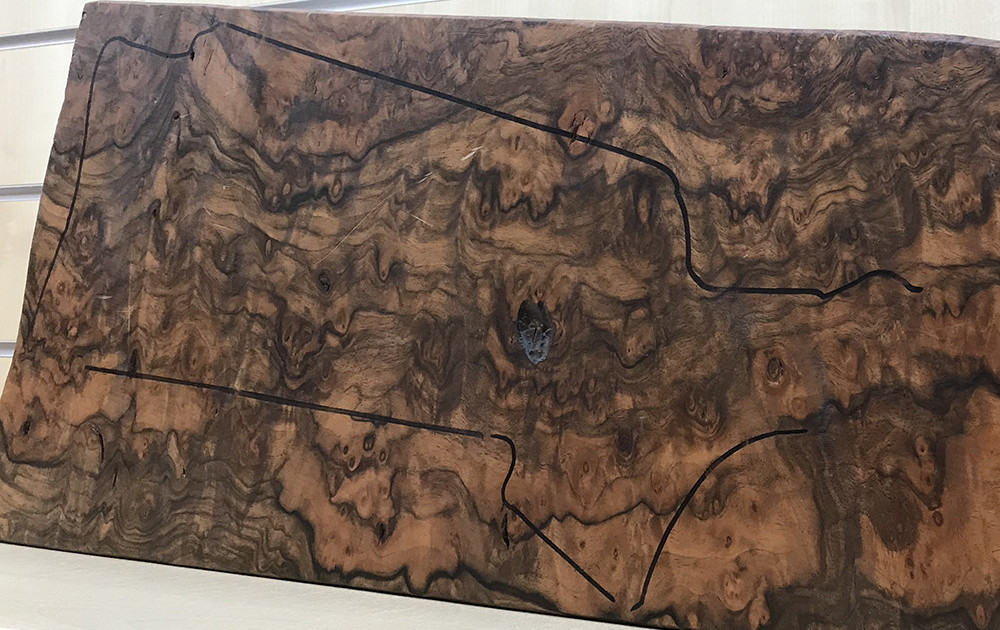Safety First
Whenever you clean your gun stock, it’s important to remember that some materials can easily catch on fire. For example, if you use a cloth that has been soaked in linseed oil or shellac, make sure you store it in a safe place where it can’t start a fire.
It’s also important to be careful when welding or soldering in a workshop, since these activities create sparks that could easily ignite something flammable. Therefore, when cleaning your gun stocks make sure there are no open flames and the location is well ventilated.
Taking Care of the Gun Stock

It appears to me that all the attention on cleaning guns is directed at the barrel and action group. There is little attention paid to the stock of the gun. After visiting the Blaser and Heym gun factories I learned that you can increase the price of the gun you purchase by thousands of dollars based only on the type of wood and the grain in it.
Sounds to me like we should put some attention on cleaning gun stocks.
Rifles usually have a stock that is treated with oil by the manufacturer. This is to protect the wood and make it last longer. However, there are a few rifles whose stock is not treated with oil. For example, some American guns have a paint-coated stock, while high-quality English hunting guns often have a shellacked stock.
Stock oil should not be used to maintain your gun. Instead, use something like Ballistol Universal Oil which is gentle and effective. If your gun has synthetic resin paint, use an emulsion or special plastics cleaner. Here is a link to Ballistol Gun Care Products.
Oiled stocks must be regularly maintained in order to stay water-resistant and decay-free. Balsin Stock Oil and SCHAFTOL are two great care agents that can help preserve old, brittle, and weathered wooden stocks.
Balsin Stock Oil is a type of oil that is perfect for wood. It is made with silicone and solvent, which makes it go deep into the wood. This way, it protects the wood and makes it look nicer because of the contrast between within the grains of the wood.
Scherell’s SCHAFTOL is made with the choicest natural products. Unlike other products, Scherell’s SCHAFTOL does not contain silicone or solvents. Despite this, it is highly resistant to weather-related influences. The application sponge from Scherell’s makes it easy to apply the oil by hand.
Both Balsin Stock Oil and Scherell’s SCHAFTOL can be used to treat wooden stocks. You can mix the colors together to get the shade you want. The oils can be used on different types of wood, like burr walnut, standard walnut, beech wood, or pinewood.
The oils can also be used to protect furniture, antique woods, and natural-wood floors from becoming rough or spotted.
Special Notes About Oil and Safety for Reconditioning
When using Balsin Stock Oil, be sure to have good ventilation. Do not smoke or have a naked flame nearby because the oil contains a combustible solvent that is part of the silicone formulation. This solvent will let the water roll off the wood better, and so the smell you might smell when working with Balsin is normal.
Nevertheless, it is important to use the correct stock oil to protect your stock and wood grain. Stock oils must always be used with caution, as soaked cloths can easily start a fire.
You should use stock oil sparingly because too much can get into the gun’s trigger or safety catch and cause it to malfunction. If this happens, you might need to take the gun to a gunsmith for repair. When you first use stock oil, you should heat it up to about 105 degrees Fahrenheit. This will make the oil lighter and allow it to penetrate the wood more deeply.
If your wood has rough pores, you can fill them in with pumice powder and stock oil. The pumice powder will set colorlessly with the oil.
Oil and Reconditioning the Gun Stock
The condition of the wooden stock affects how it must be sanded. If it is not in good condition, the stock must be sanded with emery paper to remove any noticeable irregularities. Then, with finer paper, the surface will be smoothed out. Finally, the stock can be polished with fine sanding fleece to create a smooth finish.
If you are reconditioning a stock, you should give it an intermediate rinse after the last fine sanding. This will allow the wood to swell. After it dries, use the finest emery paper to feather-edge the rising wood fibers.
Note: Always sand in the direction of the fibers!
Now that you have finished sanding the wood, you can wipe it clean with a cloth. Make sure to get all the wood dust off. Before you start to process the wood with stock oil, you should put down an underlay so that the oil does not stain the work surface. For example, use a cut-open plastic bag.
Note: Oil can also cause stains on natural stones, PVC flooring and textiles. While working, use the octagonal indent on the side of the Balsin folding box to position the bottle steadily in the lying box to prevent spilling it.
To emphasize the natural color of the wood, you can use a brush, sponge or cloth soaked in stock oil. Balsin or Scherell’s SCHAFTOL light is also recommended for routine maintenance of the stock. If you want a darker color, use the corresponding shade.
If the stock is dried out, you should oil it multiple times and let it dry overnight each time. The oil will penetrate deep into the wood, and if you have chosen to use Balsin, the silicone formulation will create a water-repellent layer on the surface of the wood.
If you are going to recondition a gun, it is important to make sure that the silicone in the Balsin doesn’t cause any problems when the gun is rebrowned. You will need to be very careful when doing this.
After the final application of the stock oil, rub in the residues that are still on the stock wood. Use a fuzz-free cotton cloth to form a small bale and move it in small circles across the entire oiled surface so that all the wood pores are filled equally. Alternatively, you can also perform this final treatment using the palms of your hands. Leave the gun overnight at room temperature.
The next morning, the wood will be shiny and have a water-resistant film on it. The film will keep the wood from being damaged by rain or decay. The wood can be transported easily on your shoulder going to and from your hunting grounds or at the firing range.
Taking Care of Gun Stocks Other Than Wood
Cleaning and maintaining stocks made of laminated wood, plastic or carbon fiber is much easier than with other materials. Here, residues and soiling can be removed relatively easily. We recommend using a gentle agent such as a Ballistol Universal Oil emulsion or a special plastics cleaner. The latter cleans the plastic reliably and makes it look like new. The surface regains its original secure grip. Special microfiber cloths improve the overall result markedly.
For a look at some of our other articles, click here at Gun Cleaning Tips.
FAQ
What can you use to clean a gun stock?
You can use a soft cloth or brush to clean a gun stock. For stubborn dirt, use a mild soap and water solution, then wipe it dry immediately to prevent water damage.
What is the best oil to put on a gun stock?
Linseed oil or tung oil is ideal for oiling a gun stock. Both oils penetrate and protect the wood, enhancing its appearance and durability. Apply a thin, even coat and let it dry for best results.
What is the best product to refinish gun stock?
For refinishing a gun stock, products like wood stain, sealant, and finishing oil are commonly used. Consider using specialized gun stock refinishing kits that include all the necessary components for a professional finish.
What cleaner to use on synthetic gun stock?
Mild soapy water or a water-based cleaning solution is suitable for cleaning synthetic gun stocks. Avoid harsh chemicals that may damage or discolor the synthetic material. Rinse and dry the stock thoroughly after cleaning.
Related Topics:

